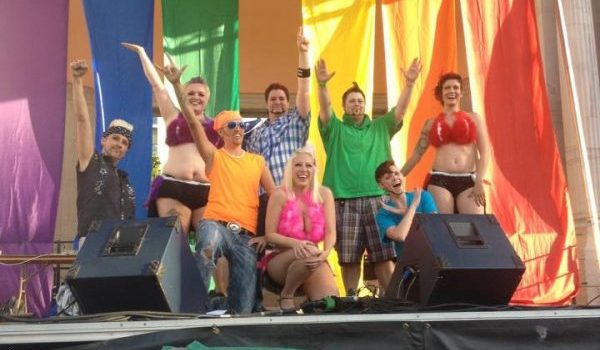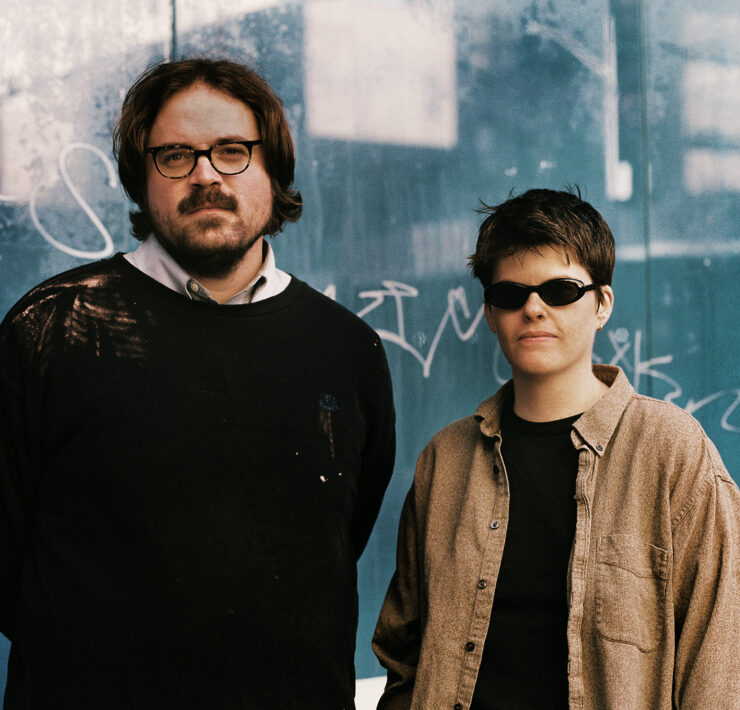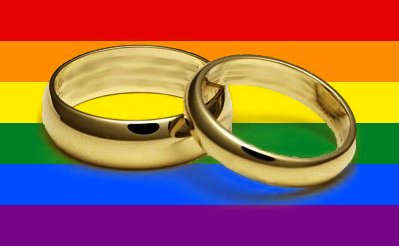The Kings of Denver: A Look at Mile High’s Rich Drag History

Addison Herron-Wheeler is OUT FRONT's co-publisher and editor-in-chief and friend…
They often get overlooked in favor of their drag queen sisters, but drag kings have just as meaningful a history and presence in Denver as the boys in heels do.
An important and beloved part of the lesbian community, drag kings have been doing their thing in the Mile High City for years. They helped lay the foundation for the welcoming queer community we know today, and they looked fierce and butch doing it. And much like the queens, while some may see drag as a time to be silly, or a chance to make tips, these kings were also creating a safe space for butch women and trans men to be comfortable and be who they are.
“I moved to Colorado in early 1999,” said Kody Morgan, who goes by Hunter Down when in drag. “I went to this little place called Zu on a Wednesday night and had my young mind blown. They had these amazing performers—drag kings. I, being a natural extrovert and performer, I knew right away that I wanted in on that scene. I began going to every show and getting to know the guys. By the end of 1999, I was a regular guest performer, and by the beginning of 2000, I was a member of the troupe.”
The troup Morgan refers to was known as the Zu Kings, named as such because of the venue where they performed. Since his Zu King days, he has been involved with other troupes, including the Southtown Kings and Alterboys, and he is now the owner and producer of local troupe Tranzcend. The experience of being involved with drag allowed Morgan to come to terms with his gender identity and embrace being male.
“For me, drag started as a place for me to be the rock star I dreamed I could be but wasn’t in real life,” he elaborated. “I remember the thrill I got the first time someone recognized me in a store. I was in the Gap at Flatirons Mall and a woman asked for my autograph. But, as I acclimatized to big city life and became more self-aware, I began to understand my own gender. Drag became a safe place for me to express the masculine parts of me without the harsh judgement and stigma I faced in everyday life. Most recently, I chose to transition from female to male.
“I can say with my whole heart that were it not for drag and the safe environment I was afforded to express my gender, I would not be here today.”
Despite all this positivity, the kings faced many hurdles on the road to success. In the early days of being a king, the logistics of presenting as male on stage weren’t as easy as they are today. While queens can tuck their junk, then stuff and pad, individuals with breasts have a lot of restraining to do.

“Back in the early days of drag, we used to put on two sports bras and an a-shirt, then wrap duct tape around our chests to bind down our breasts,” Morgan explained. “Compression shirts didn’t exist. I have some scars from pulling off the tape where it had stuck to my skin. I remember when UnderWorks.com came out with their compression shirts. We scrimped and saved to buy them. They were modern miracles—we could finally take full breaths while performing!”
In the early 2000s, the kings performed to standing-room-only crowds and had quite a following in the underground sector. They constantly created new personas and acts revolving around their characters in order to keep performances fresh and inspired.
When Zu was reborn as 60 South, the kings became the Southtown Kings. (60 South Broadway now, of course, is 3 Kings, a name that keeps the spirit of the kings alive, even if it’s mostly a heavy metal bar.) Many of the characters that popped up, like many drag queen personas, were over-the-top and campy, a mix of sexy and silly. As they developed, these characters often took on a personality of their own.
“Shayne McMunchen was a work in progress when I was first introduced to drag in 2010,” explained Sarah Alder, who identifies as female, except when playing the role of Shayne. “His character came to full fruition after figuring out his influences: Kid Rock, Shayne McCutcheon from The L Word, and Usher. Today, he continues to be the ultimate douchebag, which displays brilliantly with his ridiculous red and black wig. Born in Canada, a high school dropout and a womanizer, he specializes in hitting on women confidently and failing just as brilliantly with his incredible pickup lines, like, ‘You should buy me a drink.’ He proudly wears his douche bag title on his clothes but never disappoints with his flattery and crude behavior. Many times he has stolen my wallet to go on a week-long bender, has borrowed my car without asking, and always leaves his dirty clothes on the floor.
“His two signature numbers were Kid Rock’s ‘Picture,’ in which he was both male and female, and ‘Without You’ by Usher, where he serenades a poster of Justin Bieber,” Alder added. “I love his character because I get to be something that people love to hate, and it pushes the boundaries just enough to keep it fun and engaging.”
The kings also shared their stories with interested youth at Rainbow Alley and went on national tours. Jody Bouffard, now the owner of iconic Denver lesbian bar Blush & Blu, did sound for the troupe for a while. Many of the staples that we take for granted as a part of queer life in Denver were brand new when the kings started performing, and their energy and enthusiasm helped spur on the community.

Today, drag kings are still alive and well in Denver. In addition to newer troupes like the Mile High Kingdom, many classic troupes are still around in some form or another. Tranzcend can trace their lineage back to the Zu Kings, the Southtown Kings, and the Alterboys.
“Tranzcend has been a staple in Denver for just over 10 years,” Morgan said. “Over this time, we have raised thousands of dollars for charities, given countless new performers their platforms to grow into well-known local performers, and opened for the likes of Susan Westenhofer and EnVogue at Denver Pride.”
Not all those who started out with the early drag scene are still performers, but even those who have moved on still remember their time fondly.
“This was a fun and amazing time of my life,” said Amy Cervantez, who went by MaXX Wilson back when she performed as a drag king. “I would not have changed anything. Many of the people and friends I met I still talk to today. I think we were so blessed to have such an amazing time to pioneer drag kings in Denver.”
What started as a small troupe called the Zu Kings gave way to countless rouge kings, and even for those who didn’t stick with drag, inspired many to live as their true selves. It also inspired modern-day drag troupes, like Tranzcend.
2017 is an incredibly exciting time to do drag in Denver, as a king or queen. With the rich history of performers that came before, and the potential that makeup and clothing have in 2017 to transform gender performance, there is plenty to inspire today’s royalty to have fun, make change, and do it all with the smoothness and grace of Hunter Down or Shayne McMunchen.
What's Your Reaction?
Addison Herron-Wheeler is OUT FRONT's co-publisher and editor-in-chief and friend to dogs everywhere. She enjoys long walks in the darkness away from any sources of sunlight, rainy days, and painfully dry comedy. She also covers cannabis and heavy metal, and is author of Wicked Woman: Women in Metal from the 1960s to Now and Respirator, a short story collection.










